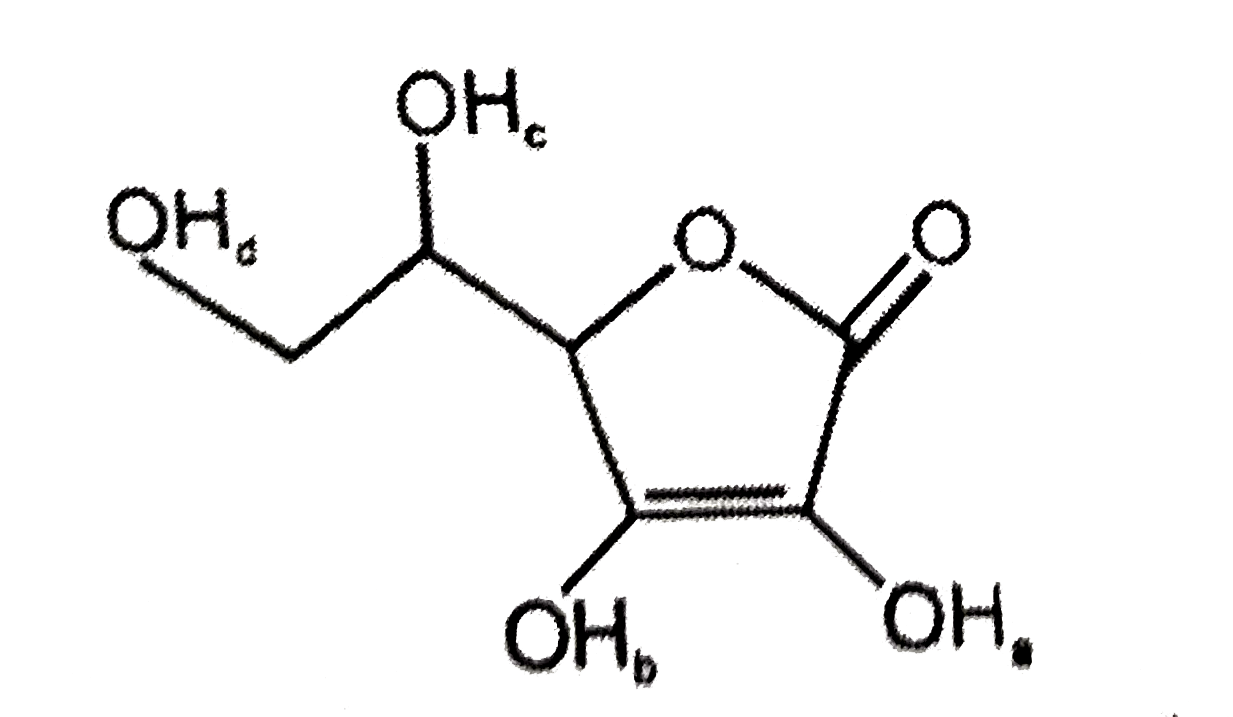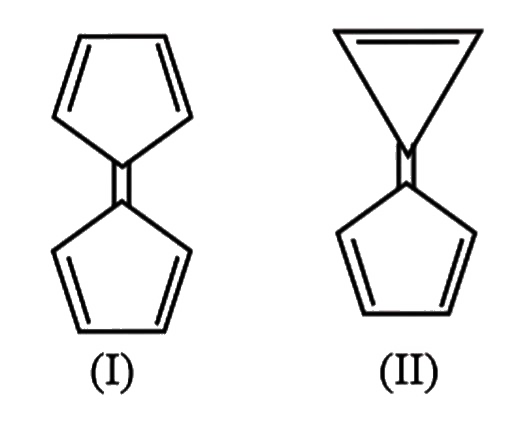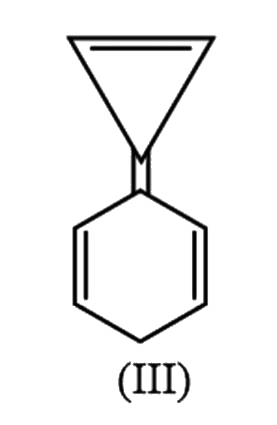Compound X2Y have antiflurate structure . What is /are correct statement ?
The miimum distance between X+ is a2 , where 'a' =edge length of unit cell
The co-ordination number ratio of x and y 8:4
If X+ removed from alternate tetrahedral void then CN is 4 : 4
If X+ removed from alternate tetrahedral void then CN is 4 : 8
The correct Answer is:A, C
To solve the question regarding the compound X2Y with an antifluorite structure, we will analyze the structure and the statements provided.
1. Understanding Antifluorite Structure:
- In an antifluorite structure, the anions (in this case, Y2−) occupy the face-centered cubic (FCC) lattice positions, while the cations (X+) occupy all the tetrahedral voids.
2. Counting Atoms in the FCC Lattice:
- In a face-centered cubic (FCC) unit cell, there are:
- 8 corner atoms, each contributing 18 of an atom, totaling 8×18=1 atom.
- 6 face-centered atoms, each contributing 12 of an atom, totaling 6×12=3 atoms.
- Therefore, the total number of Y2− ions in the unit cell is 1+3=4.
3. Counting Tetrahedral Voids:
- The number of tetrahedral voids in a FCC structure is twice the number of atoms in the lattice. Since there are 4 Y2− ions, there will be 2×4=8 tetrahedral voids.
- Thus, all 8 tetrahedral voids will be occupied by X+ ions.
4. Analyzing the Statements:
- Statement A: "Minimum distance between X+ and Y2− is a/2".
- This statement is correct. The minimum distance between the cation and anion in an antifluorite structure is indeed a/2, where a is the edge length of the cubic unit cell.
- Statement B: "Coordination number ratio of X and Y is 8:4".
- This statement is incorrect. The coordination number of X+ is 4 (as it occupies tetrahedral voids), and the coordination number of Y2− is 8 (as it is in the FCC lattice). Therefore, the correct ratio is 4:8 or 1:2.
- Statement C: "If X+ is removed from alternate tetrahedral voids, then coordination number is 4:4".
- This statement is correct. If X+ ions are removed from alternate tetrahedral voids, half of the tetrahedral voids will be occupied, leading to a coordination number of 4 for both X+ and Y2−.
- Statement D: "If X+ is removed from alternate tetrahedral voids, the coordination number is 4:8".
- This statement is incorrect. As previously mentioned, the coordination number would be 4:4 after removing X+ from alternate tetrahedral voids.
5. Conclusion:
- The correct statements regarding the antifluorite structure of X2Y are A and C.
Final Answer:
The correct statements are:
- A: Minimum distance between X+ and Y2− is a/2.
- C: If X+ is removed from alternate tetrahedral voids, then coordination number is 4:4.
- In an antifluorite structure, the anions (in this case, Y2−) occupy the face-centered cubic (FCC) lattice positions, while the cations (X+) occupy all the tetrahedral voids.
- In a face-centered cubic (FCC) unit cell, there are:
- 8 corner atoms, each contributing 18 of an atom, totaling 8×18=1 atom.
- 6 face-centered atoms, each contributing 12 of an atom, totaling 6×12=3 atoms.
- Therefore, the total number of Y2− ions in the unit cell is 1+3=4.
- The number of tetrahedral voids in a FCC structure is twice the number of atoms in the lattice. Since there are 4 Y2− ions, there will be 2×4=8 tetrahedral voids.
- Thus, all 8 tetrahedral voids will be occupied by X+ ions.
- Statement A: "Minimum distance between X+ and Y2− is a/2".
- This statement is correct. The minimum distance between the cation and anion in an antifluorite structure is indeed a/2, where a is the edge length of the cubic unit cell.
- Statement B: "Coordination number ratio of X and Y is 8:4".
- This statement is incorrect. The coordination number of X+ is 4 (as it occupies tetrahedral voids), and the coordination number of Y2− is 8 (as it is in the FCC lattice). Therefore, the correct ratio is 4:8 or 1:2.
- Statement C: "If X+ is removed from alternate tetrahedral voids, then coordination number is 4:4".
- This statement is correct. If X+ ions are removed from alternate tetrahedral voids, half of the tetrahedral voids will be occupied, leading to a coordination number of 4 for both X+ and Y2−.
- Statement D: "If X+ is removed from alternate tetrahedral voids, the coordination number is 4:8".
- This statement is incorrect. As previously mentioned, the coordination number would be 4:4 after removing X+ from alternate tetrahedral voids.
- The correct statements regarding the antifluorite structure of X2Y are A and C.
The correct statements are:
- A: Minimum distance between X+ and Y2− is a/2.
- C: If X+ is removed from alternate tetrahedral voids, then coordination number is 4:4.
Topper's Solved these Questions
- SOLID STATEBOOK - NARENDRA AWASTHI ENGLISHCHAPTER - SOLID STATEEXERCISE - Match the column
10 Videos
- SOLID STATEBOOK - NARENDRA AWASTHI ENGLISHCHAPTER - SOLID STATEEXERCISE - Assertion - Reason type Question
11 Videos
- SOLID STATEBOOK - NARENDRA AWASTHI ENGLISHCHAPTER - SOLID STATEEXERCISE - Passage-7
3 Videos
- IONIC EEQUILIBRIUMBOOK - NARENDRA AWASTHI ENGLISHCHAPTER - IONIC EEQUILIBRIUMEXERCISE - Subjective problems
1 Videos
- STOICHIOMETRYBOOK - NARENDRA AWASTHI ENGLISHCHAPTER - STOICHIOMETRYEXERCISE - Match the Colum-II
6 Videos
Similar Questions
Knowledge Check

Identify correct structure of Y.A B
B C
C D
D

Find correct structure of XA B
B C
C D
D
Three elements X , Y and Z have atomic numbers 19 , 37 and 55 respectively . Then the correct statement (s) is / are
ATheir ionization potential would increase with increasing atomic number.BY would have an ionization potential between those of X and Z.CZ would have the highest ionization potential.DY would have the highest ionization potential.

Observe the compound and choose correct statement:
View Solution
The correct compounds statement is /are :
View SolutionFor the spinel structure (MgAl2O4), the correct statement is//are
View SolutionCosider the following structures.


Choose the correct statement regarding the above structures.
View SolutionA compound X undergoes 100% pentamerisation in a given solvent Y. Correct statements are
View Solution

